|
The 1980s offered numerous examples of how,
beneath the rather normal political posture that American politics
seemed to take with the Reagan-Bush return of Middle-America to its
place of prominence, serious challenges to America's social-moral order
were taking place. The Boomer mentality (also embraced by a
still-disenchanted intellectual-academic world) had not gone away, by
any means. It simply was working somewhere below the surface of the
more visible Reagan-Bush world.
The continuing decline of America's traditional Christian denominations
This rising anti-Middle-America (actually
just anti-traditionalist) culture would have an increasingly negative
impact on American Christianity, the source of the traditional
social-cultural values that had shaped America since its founding 3½
centuries earlier. The old denominations (Methodist, Presbyterian,
Lutheran, Episcopal, etc.) that had been at the heart of that
traditional culture were still holding to the older Biblical view of
society and its rules and obligations. However, the "New Age" Boomers,
not unexpectedly, as a matter of high principle, continued to see such
faith as mere religious bigotry. Thus recruitment of Boomer America
into traditional Christianity was rather marginal. As a consequence, as
the 1980s rolled along, it was increasingly just the conservative Vet
generation which made up most of the Sunday morning gathering at the
traditional American church. And as that sector of the population aged
(and began to die off) so also did church attendance continue to
evidence a slow but steady decline.
The gospel of peace and social justice rather than personal salvation
To try to reverse this trend, the impulse
of the more "enlightened" members of the denominational leadership was
to try (once again) to make their churches more "relevant" to this new
post-Vet culture. Thus as the Boomer culture took up the perfectionist
crusade for "peace and social justice," so also the leading voices of
the major denominations turned to these same matters, proclaiming the
pursuit of peace and social justice as being more relevant to the times
than promoting the "old-time religion" of personal repentance and
salvation.
There was even a bold attempt to
accommodate rising feminism by insisting on the use of "inclusive
language" in all religious discourse within the mainline denominations.
Actually, there was nothing at all inclusive about such language. Quite
the opposite. It was in fact quite exclusive in the way it prohibited
the use of the term "man" or "mankind" when describing the human race
and the world "Father" (or any other male terms) in reference to God.
Indeed, the familiar Revised Standard Version of the Bible itself
underwent a rewrite in order to accommodate "inclusivity," so that the
old Biblical use of the word "brothers" would be replaced by words
implying merely the status as colleagues, or it was simply expanded to
read "brother and sisters" etc., etc. The new morality now decreed that
use of male terminology was to be avoided at all costs. This was the
sin of all sins.1
An event indicative of where inclusivity
was taking Christianity occurred in early November of 1993, when over
2000 women (and a handful of men) attended a conference in Minneapolis
entitled: "Re-Imagining: A Global Theological Conference by Women, for
Men and Women." This conference was a follow-up to the World Council of
Churches' Ecumenical Decade: Churches in Solidarity with Women 1988-1998
in which the mainline Protestant churches pledged to be more pro-active
in support of women in ministry. Heavy in its support of the
Re-Imagining Conference was the Presbyterian Church, especially its
Women's Ministry Unit. But Methodist and Lutheran support was also big.
Claiming that traditional Christianity
throughout its history had long been very hurtful to women, an effort
was undertaken to remove not just all male language but all male images
within Christianity. Thus God as Father was replaced by God as Sophia,
or "Wisdom" (a strongly feminine reference to God). The "masculine"
character of Christianity, such as Jesus shedding his blood on the
cross for our sins, was attacked as simply male chauvinism that needed
to be rejected. "Victim language" was also part of the presentation,
such as the reference to the cross as a symbol of evil, the murder of
an innocent victim. At the culmination of the conference a communion
service was held in which milk (a strictly feminine by-product!) was
substituted for the sacramental wine used traditionally in communion
services.
But the conference ultimately proved to
be overkill. The rest of Protestant Christianity had not yet evolved to
such "progressive" standards, and the reaction within the mainline
churches was swift and heavy. But the impulse still remained – just
below the surface. Consequently, national denominational conferences
became battlegrounds between the old guard and the rising new guard,
with the old guard annually losing more and more ground in the votes on
the key issue of ministerial ordination of homosexuals (women had
already begun to breach the all-male barrier in the late 1950s or early
1960s).
Homosexuals as the new victim-group
By the mid-1980s the feminists were
joined by a new movement, that of the lesbian and gay or
homosexual-rights advocates, who also aimed to roll back the
traditional ("straight") male position in society. Homosexuals were now
perceived as the latest victim-group, needing liberation from
traditional social-moral authoritarianism.
The terrible AIDS virus was cutting
through the homosexual community like a Bubonic plague. The cause of
the spread of the disease was certainly clear enough, though the
slowness of the world around the homosexual community to find a medical
cure was loudly declared to be a clear demonstration of the cruel
indifference to, if not outright hatred of, the homosexual community by
the "straight" world. Condemnation of homosexuality by certain
political and religious voices only added fuel to the fire of Boomer
outrage against the "homophobes" who thought homosexuality to be evil
(as by tradition and Biblical standards it was indeed considered to be
– or at least, like prostitution, a major sin).2
Ultimately a combination of Boomer, "do your own thing" ethics, plus
the sympathy felt for yet another victim group on the American scene,
led to a campaign to make homosexuality acceptable as simply another of
the many lifestyles available in a "free" society.
Liberal, Fundamentalist and Evangelical Christians
As American mainline Protestant churches
became more Liberal or Humanist in message, some Christians pulled out
of these churches in order to join a fast-rising group of
non-denominational (independent) Evangelical churches. While the growth
rate of these new churches did not offset the decline of the
traditional denominations, they certainly were part of the huge shift
away from denominational or mainline Christianity.
These independent churches appearing here
and there offered a new "hip" format of upbeat "praise and worship,"
and less social-political and more personal evangelical appeal in the
sermons. Younger Christians "church shopped" in the quest for more
interesting, more stimulating, worship than what they felt was offered
by the older denominations, especially with their uninspiring focus on
peace and social justice (the "Liberal" agenda).
The Evangelical movement would have a
very strong impact on America, helping immensely in keeping it from
going the way of Europe in sliding into a mass abandonment of its
Christian faith in favor of a purely materialist or Secular lifestyle.
Evangelicalism distanced itself from
Christian Liberalism, the latter with its strongly Humanistic logic,
once again seeing Jesus as merely a model for correct moral behavior
and the reward of heaven as simply awaiting those who acted in a
righteous, moral way during their lifetime (if they even gave Heaven
any thought at all).
However, although these Evangelical
churches were conservative in both theology and social philosophy, they
were not Fundamentalist – although Liberals would not understand the
difference between conservative Fundamentalists and conservative
Evangelicals and brand all Christian conservatives as Fundamentalists.
But Evangelicalism was definitely not
simply another form of Fundamentalism, with the latter's strict
legalism with respect to the commands of the Bible and sense of rewards
or punishments awaiting those who either conform to or do not conform
to those strict Biblical standards. From the point of view of the
Evangelicals, both Liberal and Fundamentalist Christianity were simply
differing forms of "works righteousness" Christianity, in which the
"good works" of the individual determined that person's ultimate
heavenly reward or salvation. Both of these Christian philosophies
conformed nicely with the American "can do" spirit. But, according to
Evangelicals, both had little in common with the original Christianity
that informed America spiritually in its early, very difficult times.
Evangelicals saw themselves as a replay
of the original Puritan (early 1600s) and the former "Great Awakening"
Christianity (mid-1700s and early-to-mid-1800s) in which the Holy
Spirit convicted individuals (and nations) of their sinfulness and
their need to call on salvation by or through Jesus Christ, as the
individual – or even family and nation – came to look in faith to the
power of Jesus, not man's personal power, not even his moral power, to
bring salvation. That power derived alone from the covenantal power
between man and God which was instituted with the blood sacrifice of
Jesus on the Roman cross. Human works, no matter how good the effort,
could not of themselves bring the kind of righteousness that would ever
be sufficient to permit an individual or nation to stand before a
perfectly Holy God. Only through a totally submitted faith in the
Lordship of Jesus Christ would the believing individual or nation then
receive from Jesus the empowerment of the Holy Spirit, an empowerment
that helped the believer take on sin's ever-constant challenges, and
move ahead in his/her or their (whole societies') pilgrimage toward
full union with God.
But the process needed to start out with
a deep conviction by the Holy Spirit of the individual's or nation's
sins, producing a profound sense of eagerness to repent and change
one's ways, in other words, to be "born again" in/of/by the Holy
Spirit. Likewise this same spirit of repentance would have to be always
put again and again before the believer because the struggle against
sin was constant. The need for ever-renewing spiritual revival would be
an ongoing characteristic of the pilgrimage. But by the grace of God
the pilgrimage would ultimately result in victory over sin and lead to
the glorious eternal reward for the faithful, both individual and
national, and both here on the earth and in heaven beyond.
But tragically even Evangelicalism itself
from time to time was able to get caught up in the can-do spirit of
American culture, and abandon its original purpose (staying humbly
dependent on the mercies of God) to indulge in the glories of faith,
usually glories very material in nature, and very disastrous in
consequence. Many (though by no means all, or even most) revivalists
and evangelical pastors got caught up in the scandal of Evangelical
triumphalism, sometimes mockingly called the "name it and claim it"
theology.
Christians were encouraged to believe in
victory in the face of defeat and success in the face of hardship. And
certainly the testimonies of multitudes of Christians pointed out what
the Framers of the Constitution had discovered: that God indeed does
provide. God is indeed Providence personified. But this understanding
got extended too easily to the quest of the "American dream" of
material wealth and social success, and thereby easily corrupted the
souls of a good number of people.
By the later 1980s scandals seemed to
break out everywhere before the eyes of the public concerning money or
sexual misbehavior of prominent television Evangelists such as Jim
Bakker (money and sex), Jimmy Swaggart (sex) and Oral Roberts (a
questionable appeal for more money for his ministry, or otherwise the
Lord would "call him home").
But somehow Evangelical Christianity
survived. In fact it settled down and matured, and moved the nation
forward down a Christian path.
The hardening of the language of cultural debate
As the 1980s turned into the 1990s,
derogatory names now became a regular part of the language used in the
cultural battle: the traditional male role in society was now defined
by feminists as "male chauvinism." And the traditional negative
attitudes of both males and females toward homosexual behavior was
termed "homophobia." Both chauvinism and homophobia were treated by the
Liberal side of the social divide as if they were some kind of dire
social disease, even a crime.
And Christians of the newly rising
Evangelical variety began to speak contemptuously of the Liberal
mindset as engaging in "political correctness" (or "PC"), implying that
Liberals were simply mindlessly conforming to trendy but dangerous
social ideals. And Liberals responded in kind with their terming the
Evangelicals as Fundamentalists, implying that these conservative
Christians were themselves merely mindlessly mouthing outdated and
dangerous truisms of a dying cultural past.
Thus both sides found themselves battling
for a greater hearing of their viewpoints, especially among the
country's youth, in an effort to mold the rising generation's thinking
to their Liberal or Conservative ideals.
In general the Liberals were much more
successful in pressing their new social ideals on the nation, requiring
"sensitivity" or "re-education" programs within the professional world,
and the new "Liberal" attitudes taught in the public schools. It was
the Liberals' goal to eliminate the outdated traditional male and
"straight" views that Americans young and old might be harboring. And
because it was easiest and most effective of all in meeting the goal of
"re-educating" America, a huge effort was made to allow only the
Liberal worldview to be brought into America's public education. In
this endeavor the Liberals had the federal courts on their side. But
the Christians were not simply going to give up the battle just because
the all-powerful courts had taken the position that "religion" (or at
least just the Judeo-Christian variety of religion) in the nation's
public life was now "unconstitutional."
Reagan's prayer amendment
To counter this Secular cultural trend
developing in America, thanks to the federal courts, in May of 1982
Reagan, in a speech to Congress, proposed an amendment to the
constitution, reading:
Nothing in this Constitution shall be construed to prohibit individual or
group prayer in public schools or other public institutions. No person
shall be required by the United States or by any state to participate
in prayer.
Reagan stated that the nation's liberty
rested on "an abiding faith in God," and cited Washington's famous
statement in his farewell address:
Of all the dispositions and habits which lead to political prosperity, religion and morality are indispensable supports.
Reagan pointed out that America's
children should have an opportunity to begin each school day in prayer,
and "since the law has been construed to prohibit this, I believe that
the law should be changed."
But once again, after much push by
Evangelicals (and a poll revealing that 80 percent of the Americans
approved of the amendment), and much opposition by various mainline
Christian and Secular groups, the Amendment, when put to a vote in the
Senate in March of 1984, fell short of the two-thirds requirement for a
Constitutional Amendment, with 56 votes in support (37 Republicans and
19 mostly-Southern Democrats) and 44 votes in opposition (18
Republicans and 26 Democrats), thus failing passage by eleven votes.
Reagan would try again the next year, and fail again at the effort
1For
instance, the use of "inclusive language" not only in all course work
but even in all personal conversation was the one and only agreement
that a student entering Princeton Theological Seminary had to sign
contractually upon entering the three-year academic program in the
mid-1980s.
2The
first-century Christian leader, Paul, in his Letter to the Romans
(chapter one, verses 20-32) goes into lengthy discussion about how such
male and female sexual perversity is a result of men and women
abandoning their knowledge of God … with the tragic result that God
then simply allows them to fall victim to their own very
self-destructive sexual lusts. Not surprisingly, therefore, many
Christians believed that AIDS was simply the fruit of just such a
horrible sexual dynamic.
| 
 Christianity struggling to find its way
Christianity struggling to find its way
 The Supreme Court becomes a major battlefield in the cultural war
The Supreme Court becomes a major battlefield in the cultural war Racial feelings explode: The Rodney King incident
Racial feelings explode: The Rodney King incident Christian leadership in the White House
Christian leadership in the White House The
world of science continues to challenge our understanding of life
The
world of science continues to challenge our understanding of life




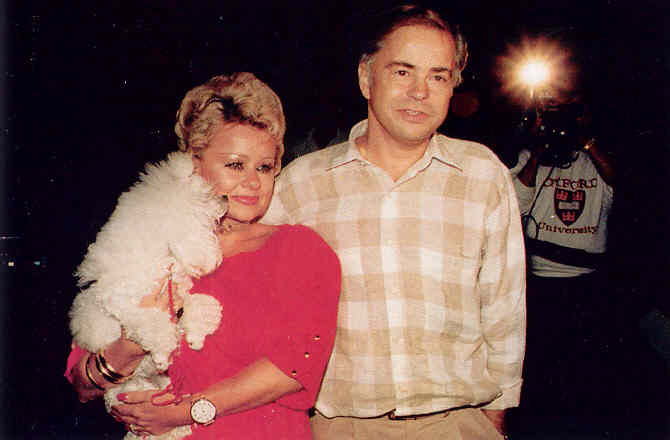
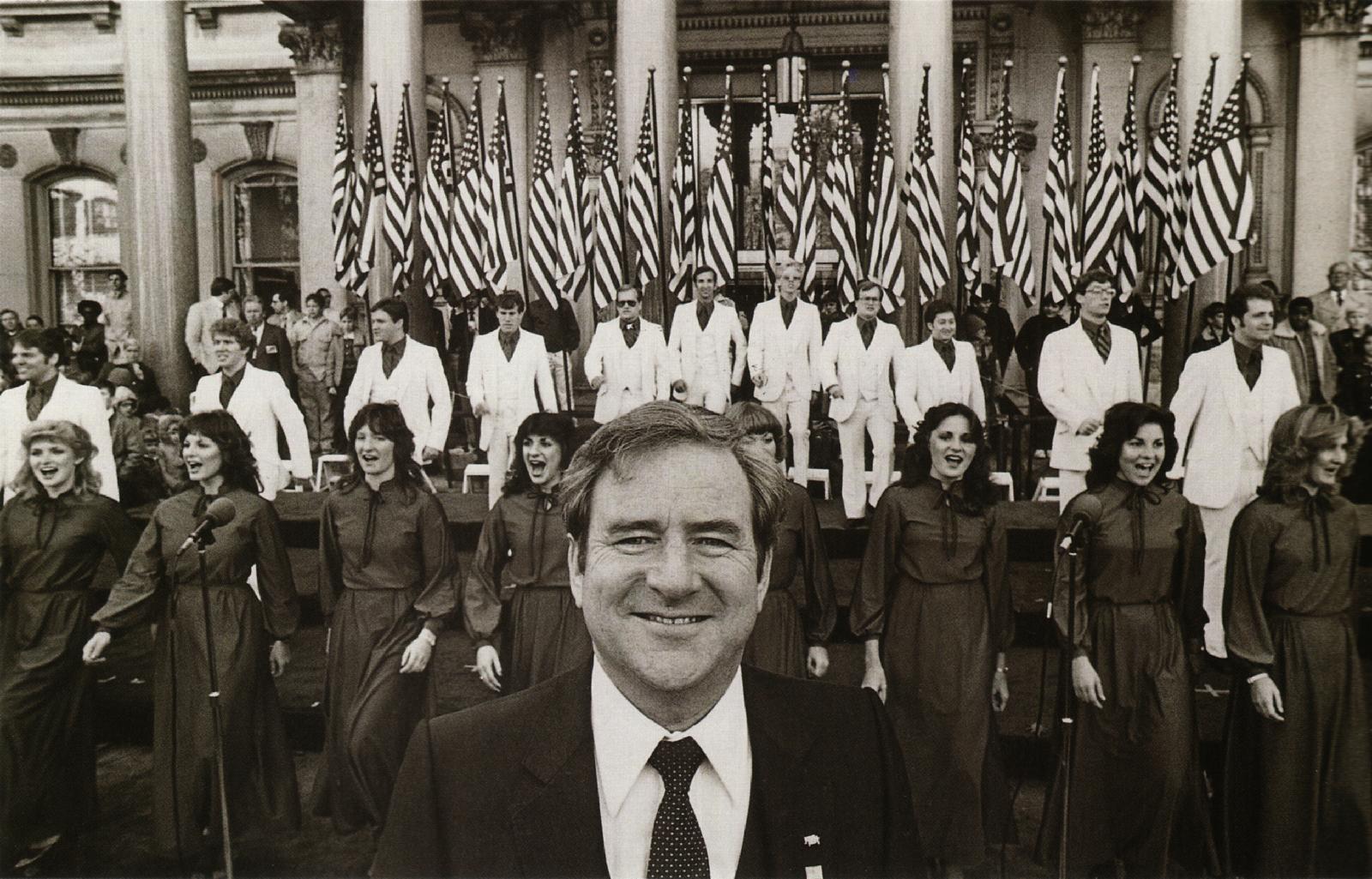
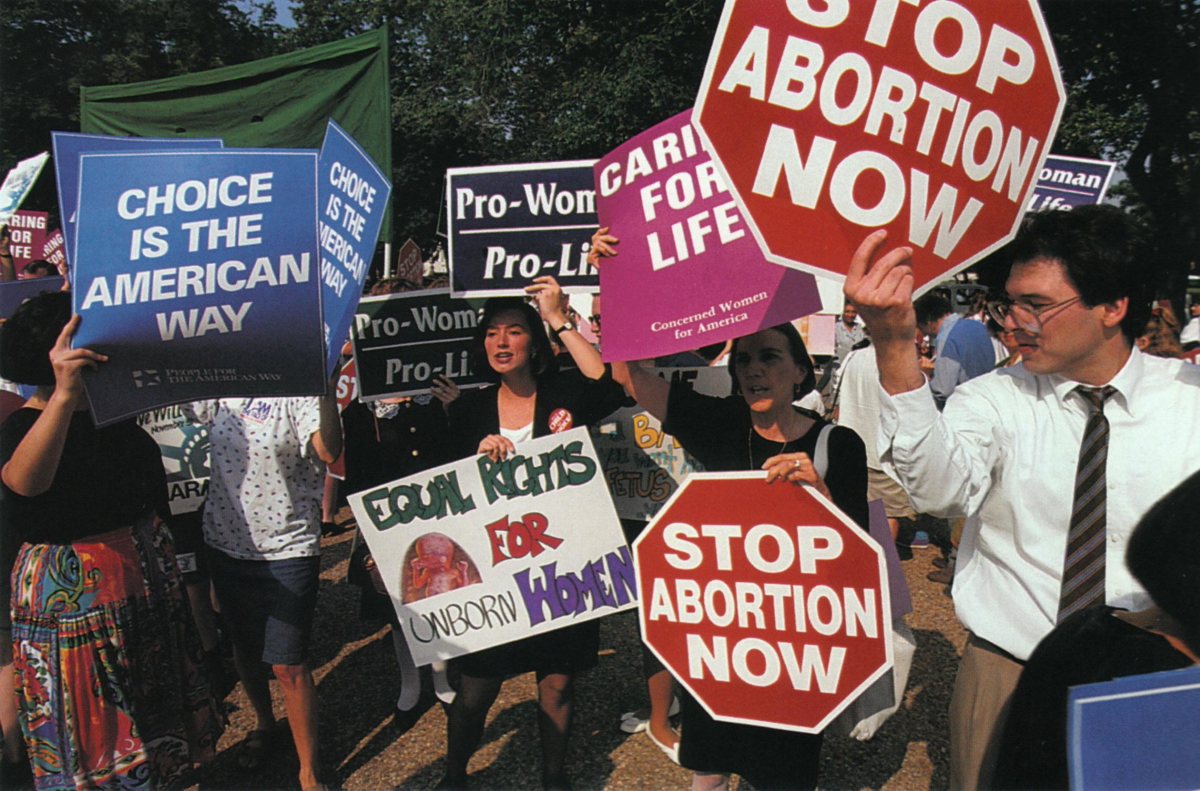


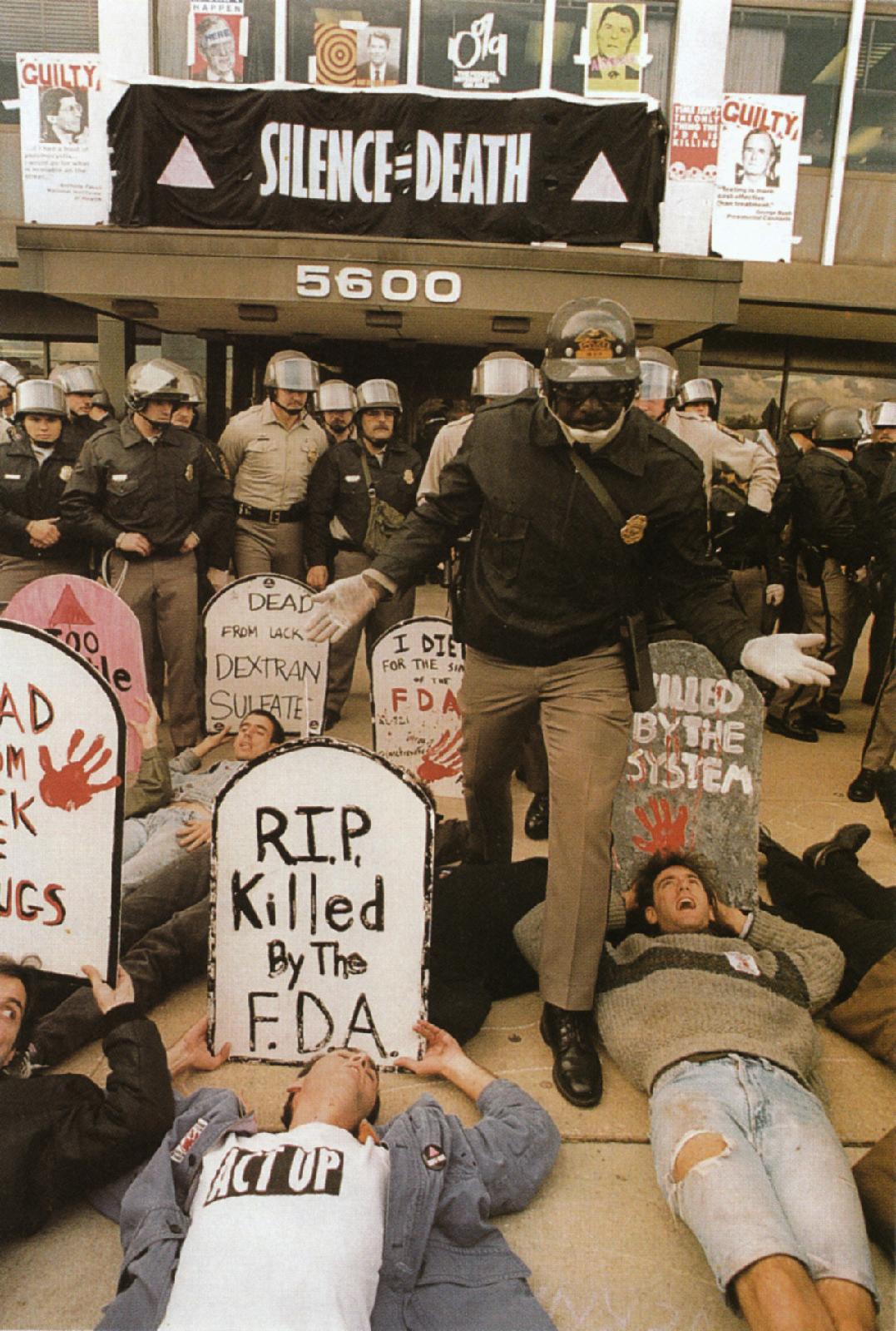
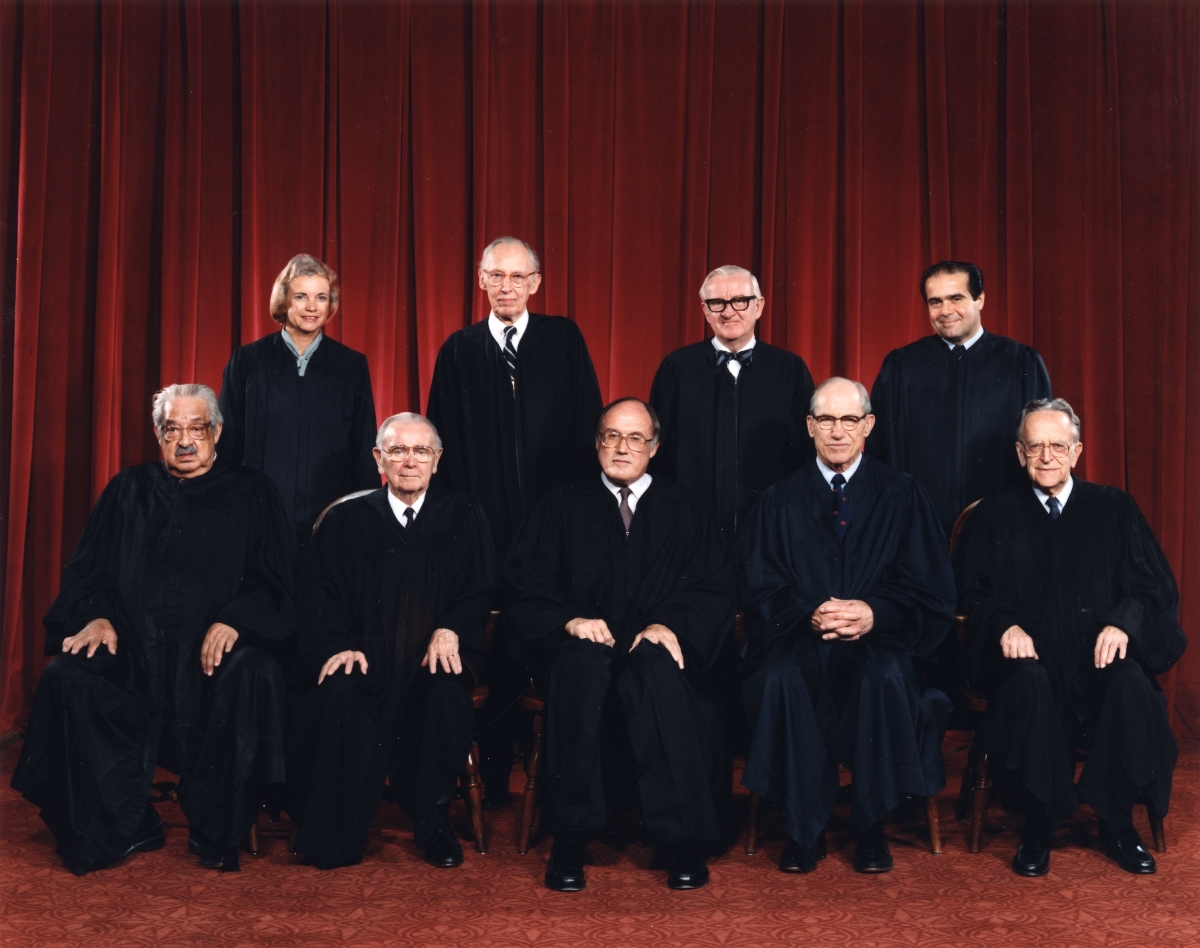
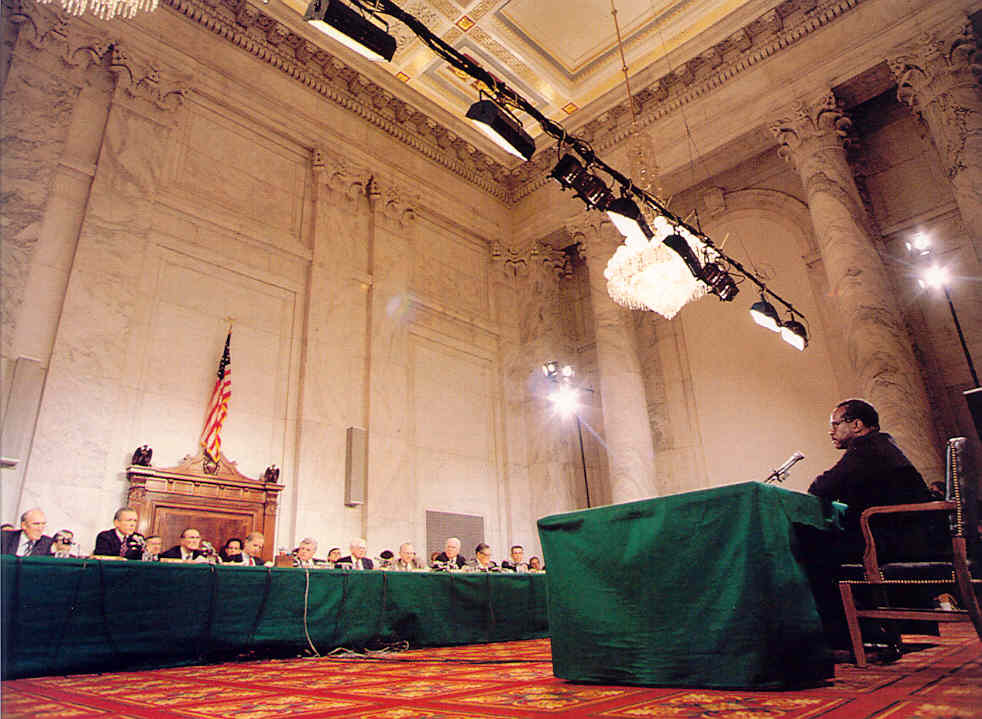
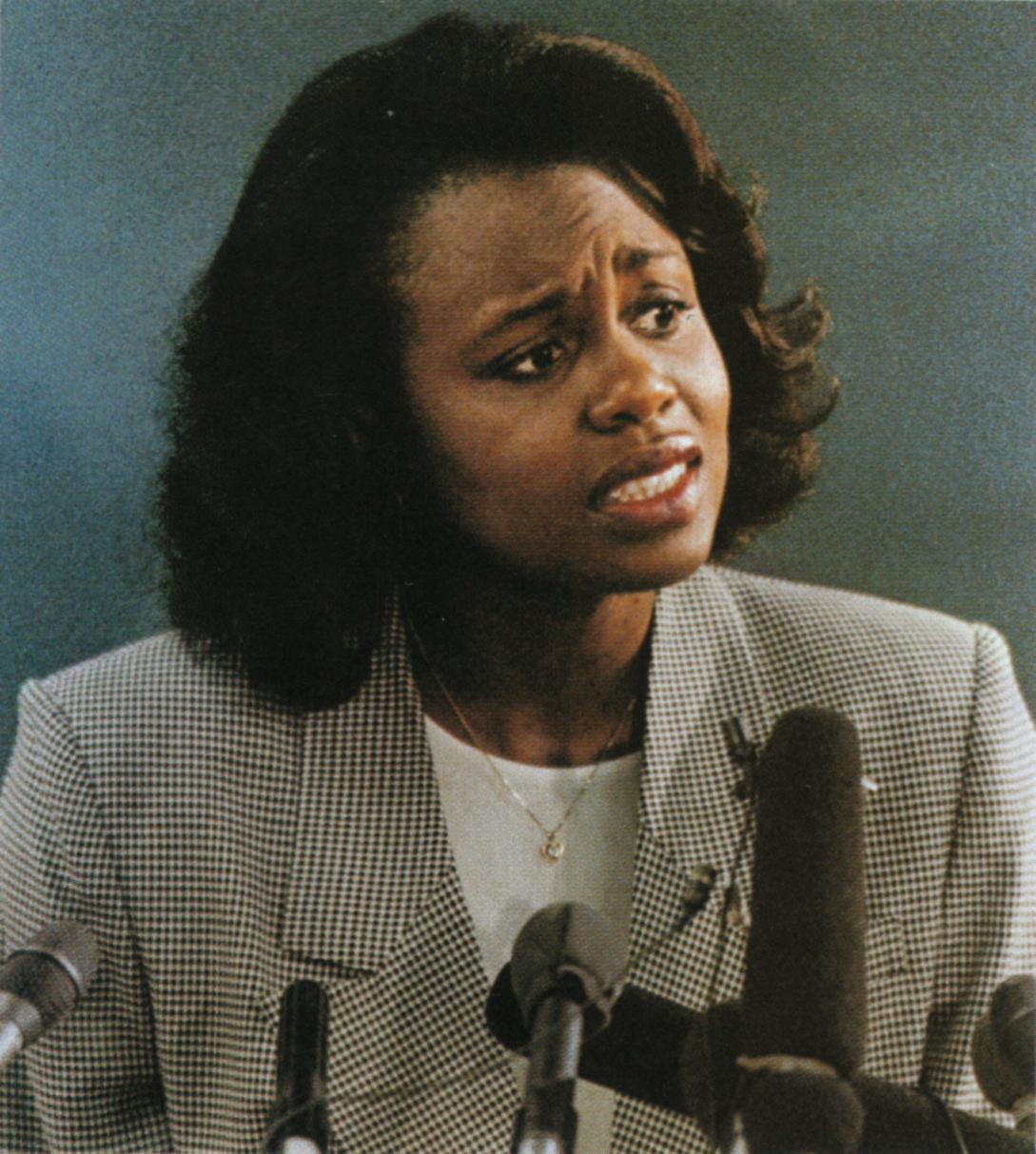
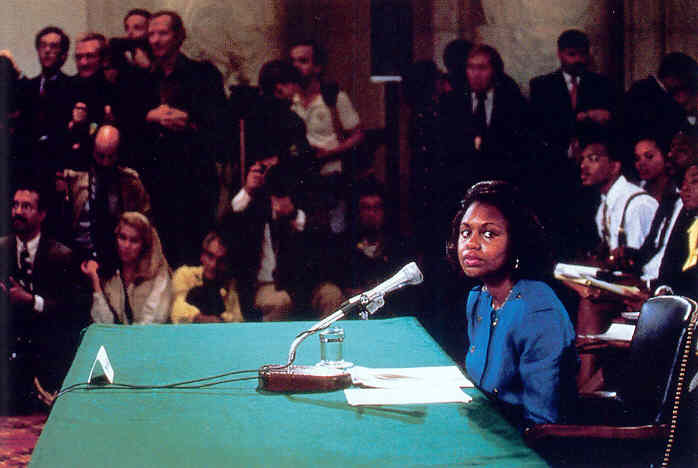
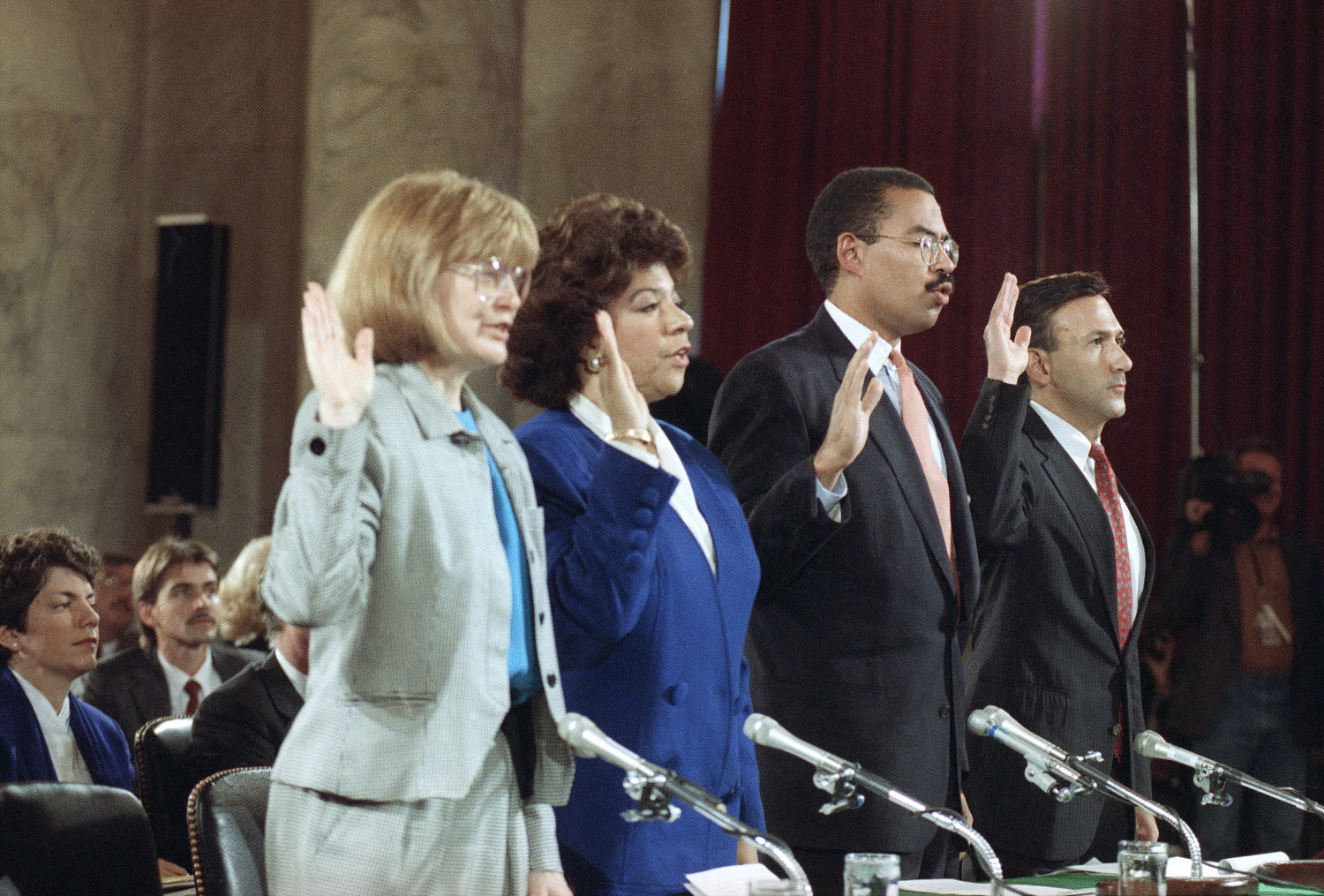
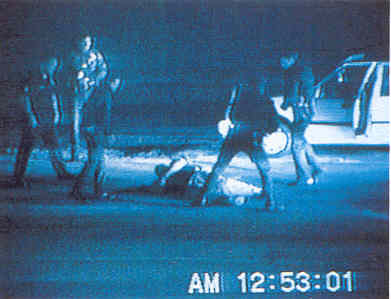
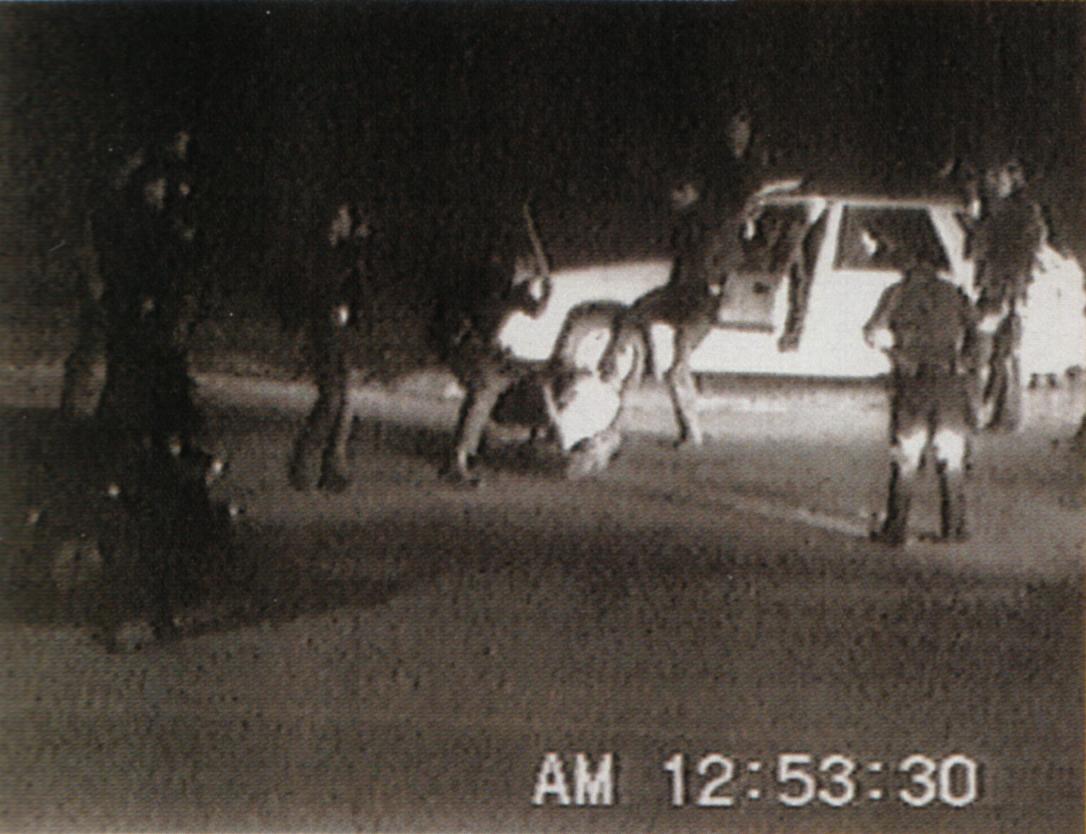
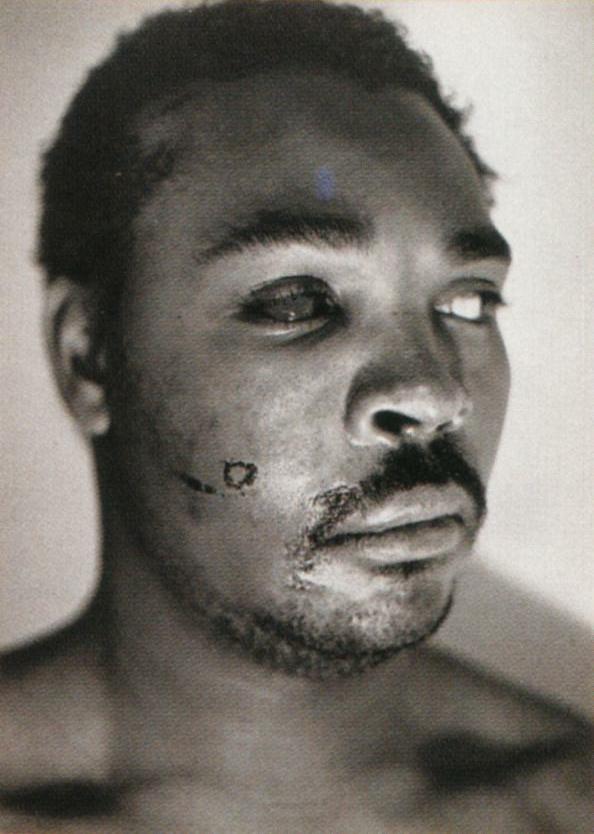

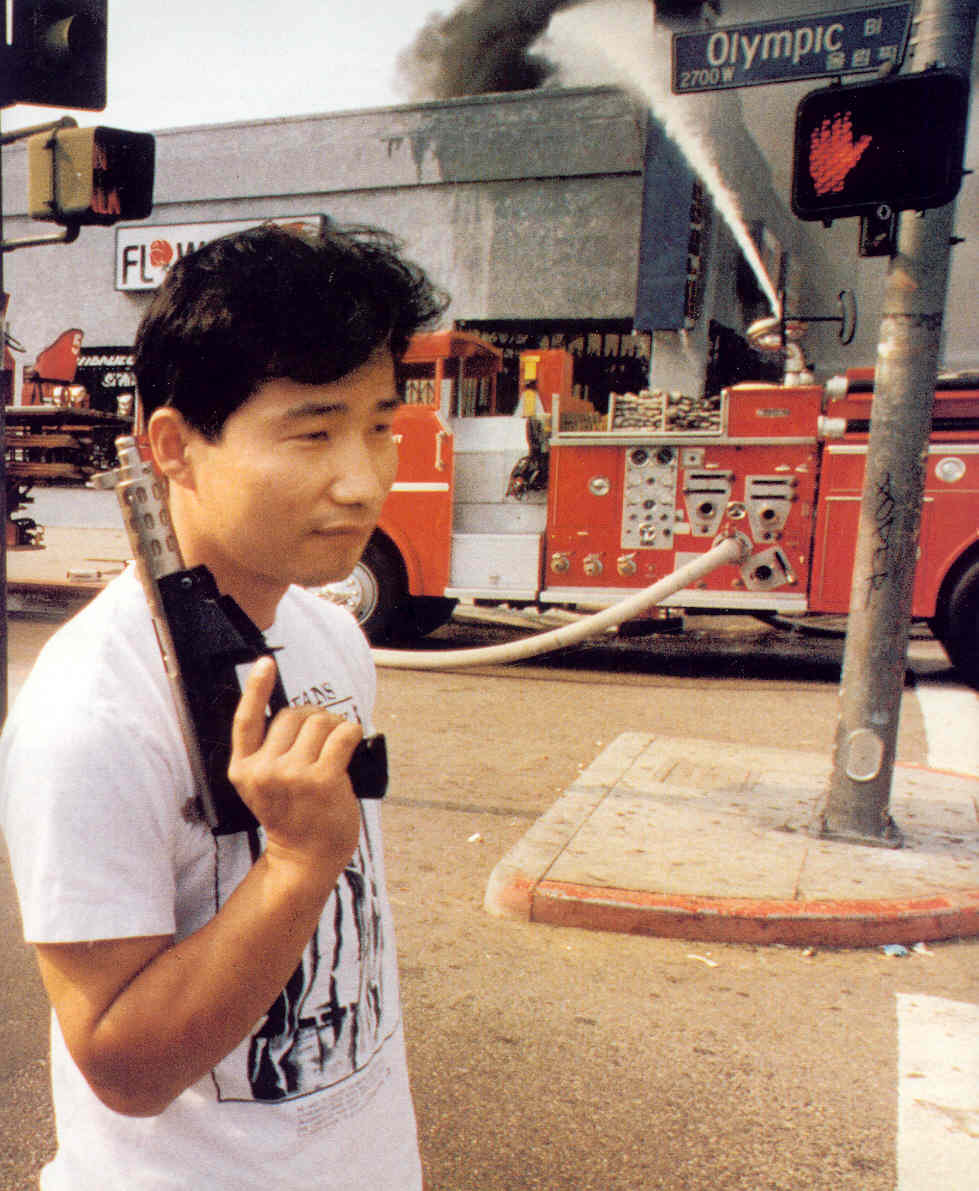







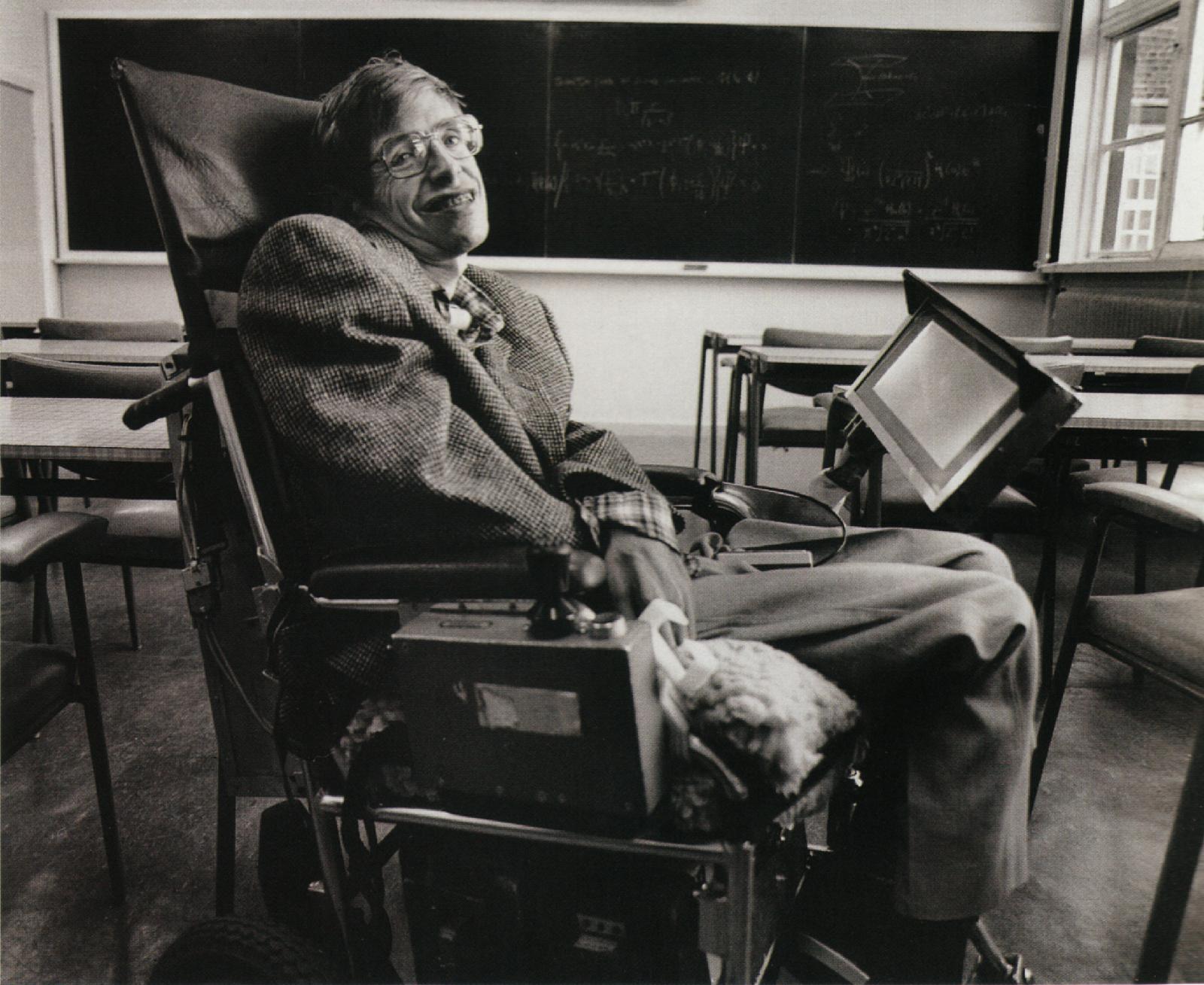

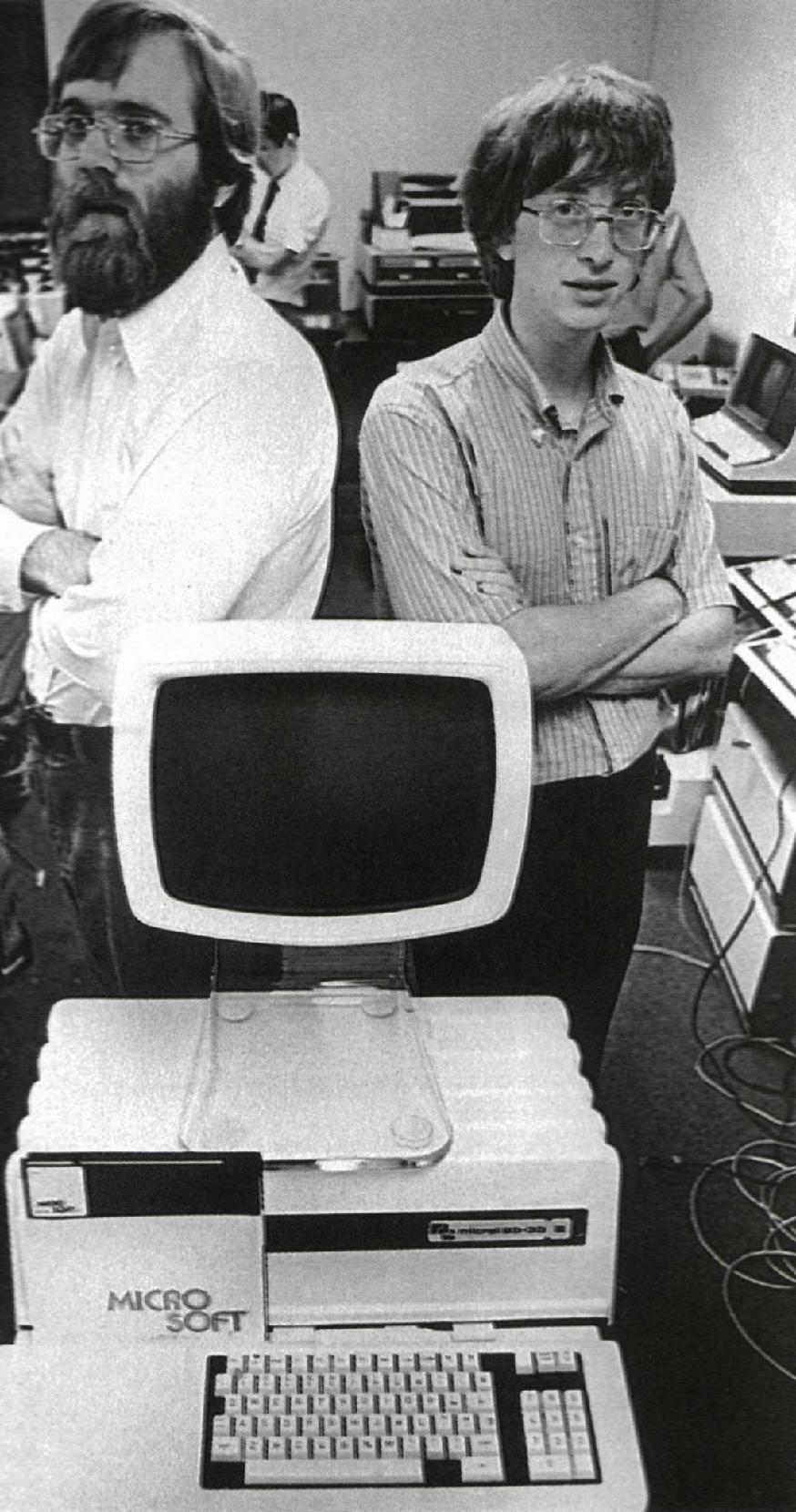


 Miles
H. Hodges
Miles
H. Hodges